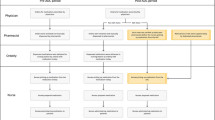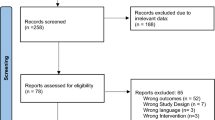Abstract
Poison control centers have been shown to be a cost-effective alternative to healthcare visits for poisoning exposures, yet emergency departments (ED) and urgent care centers (UCC) continue to be frequently accessed for poisoning exposures in young children. We sought to identify predictors of young children who obtain healthcare for a nontoxic poisoning exposure. Poisoning exposure cases for children ≤5 years old who sought ED, UCC, or clinic care between 2001 and 2005 from an urban regional pediatric hospital system were identified from poisoning ICD-9 codes in the hospital administrative data and from a poisoning designation in the National Electronic Injury Surveillance System (NEISS) data. Cases (n = 2,494) were reviewed and categorized as either toxic or nontoxic. Toxic exposures were those with more than minimal potential for clinical effects. Most cases were between 1 and 2 years old, male, White, enrolled in Medicaid, sought ED care, had no referring physician, and brought to the facility by a parent/guardian. Logistic regression analysis revealed that the odds of seeking healthcare for a nontoxic poisoning exposure were significantly greater if the child was African American, enrolled in Medicaid, had a non-medication related poisoning, and was brought to the healthcare site by a parent/guardian. Healthcare costs and unnecessary use of healthcare resources for nontoxic poisoning exposures could be reduced by educating parents and providers of children at high risk for inappropriate healthcare visits for nontoxic poisonings to initially contact the poison control center (1-800-222-1222).
Similar content being viewed by others
References
Franklin, R. L., & Rodgers, G. B. (2008). Unintentional child poisonings treated in United States hospital emergency departments: national estimates of incident cases, population-based poisoning rates, and product involvement. Pediatrics, 122, 1244–1251.
McCaig, L. F., & Burt, C. W. (1999). Poisoning-related visits to emergency departments in the United States, 1993–1996. Journal of Toxicology and Clinical Toxicology, 37, 817–826.
Schillie, S. F., Shehab, N., Thomas, K. E., & Budnitz, D. S. (2009). Medication overdoses leading to emergency department visits among children. American Journal of Preventive Medicine, 37, 181–187.
Chafee-Bahamon, C., & Lovejoy, F. H., Jr. (1983). Effectiveness of a regional poison center in reducing excess emergency room visits for children’s poisonings. Pediatrics, 72, 164–169.
Stremski, E. S. (1999). Accidental pediatric ingestion, hospital charges and failure to utilize a poison control center. Wisconsin Medical Journal, 29–33.
Institute of Medicine. (2004). Forging a poison prevention and control system. Washington, DC: National Academies Press.
Andersen, R. M. (1995). Revisiting the behavioral model and access to medical care: Does it matter? Journal of Health and Social Behavior, 36, 1–10.
U.S. Consumer Product Safety Commission. (2002). National electronic injury surveillance system. All injury program sample design and implementation. Washington DC: U.S. Consumer Product Safety Commission.
Bronstein, A. C., Spyker, D. A., Cantilena, L. R., Green, J. L., Rumack, B. H., & Griffin, S. L. (2009). 2008 Annual report of the American association of poison control centers’ national poison data system (NPDS): 26th annual report. Clinical Toxicology, 47, 911–1084.
Polivka, B. J., Casavant, M. J., Malis, E., & Baker, D. (2006). Evaluation of the Be Poison Smart! poison prevention intervention. Clinical Toxicology, 44, 109–114.
American Association of Poison Control Centers. Finalized Out-of-Hospital Patient Management Guidelines. Available at www.aapcc.org/dnn/PatientManagement/tabid/158/Default.aspx. Accessed February 3, 2010.
Acknowledgments
This project was supported by a grant from the Agency for Healthcare Research and Quality 1R03HS015713-01A1.
Author information
Authors and Affiliations
Corresponding author
Rights and permissions
About this article
Cite this article
Polivka, B.J., Casavant, M. & Baker, S.D. Factors Associated with Healthcare Visits by Young Children for Nontoxic Poisoning Exposures. J Community Health 35, 572–578 (2010). https://doi.org/10.1007/s10900-010-9243-8
Published:
Issue Date:
DOI: https://doi.org/10.1007/s10900-010-9243-8




